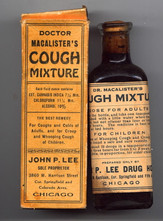Hemp is a variety of the Cannabis plant family that contains minimal amounts of THC, the chemical responsible for the 'high', and Marijuana is a
common and interchangeable word for Cannabis Sativa, the strain most popular for its high THC content. Both have been
around for centuries.
When the U.S. was first
colonized, hemp was an important cash crop. In fact, King James ordered that each
colonist grow 100 hemp plants to be used for fiber exports. If a farmer refused to grow hemp, they could
be fined or even jailed. Even George
Washington, the very first U.S. president, was a hemp enthusiast, growing it
at his plantation. Next to lumber and tobacco, hemp was the most
popular cash crop in the U.S.
William Randolph Hearst was best known as a
newspaper mogul whose empire stretched from coast to coast. Hearst newspapers popularized “yellow
journalism”—a tabloid style of news reporting that was exaggerated, crude, and
sensationalistic. Readers lined up to
hear the latest stories about crime, corrupt public figures, and sex scandals.
Although experts on marijuana information and history
argue about the truth behind the story, many believe that Hearst had a
significant investment in the timber industry. Because hemp is quick-growing and can be used
to make high-quality paper products, it posed a real threat to the wood and
pulp industry.
Another player in the war against hemp was the Du Pont company, which had
recently patented a new substance called nylon. They had also discovered a new process of
using wood pulp to manufacture paper. Du
Pont feared that in addition to being an easy source of high-quality paper,
hemp could also be used as a substitute for nylon.
In addition to being a potentially huge competitor to the wood pulp industry
and nylon, hemp also posed a threat to the oil and gas industry. After it became clear that ethanol could serve
as a replacement for standard gasoline, a law enacting a prohibition on alcohol (the 18th Amendment) was
passed in 1919. When Ford Motor Company
discovered a way to extract ethanol from hemp, the oil industry had a new
enemy. A push began to make hemp and its’
cousin marijuana, illegal to eliminate all potential competition.
As early as the 1910s, the criminalization of
marijuana was already underway with individual states passing laws to ban it. This happened due to a wave of alcohol
prohibition initiatives that swept cannabis along with them. It also happened because states were concerned
over the lack of control and regulation they had over various medicinal
concoctions that featured not only cannabis, but cocaine, peyote, and other
seriously hallucinogenic chemicals. During
the time, cannabis was used for everything from pain and insomnia to migraines and symptoms of
depression.
Powerful individuals have friends in high
places, and Hearst and the Du Ponts were no exception. They enlisted the help of Andrew Mellon, the
Secretary of the Treasury. Mellon was
also heavily invested in the Du Pont company.
In 1932, Federal Bureau of Narcotics was
formed, headed by Harry Anslinger, Mellon’s nephew. Although cannabis was not a narcotic,
Anslinger helped lead the campaign against it, popularizing the Mexican Spanish
name for the substance—“marihuana.” This
painted cannabis as foreign and dangerously exotic, making it seem as though
the criminalization of marijuana was necessary to keep the country safe, and
Hurst ran misleading and scandalous articles in his newspapers depicting cannabis
as the leading cause of crime, rape, and murder in the country.
By 1936, 48 states had passed regulations on marijuana. After the passage of the Marijuana Tax Act in
1937, the number of cannabis prescriptions plummeted. Rather than register with the federal
government and pay an annual fee in order to prescribe cannabis, doctors began
treating their patients with other drugs.
To fill the medicinal void, pharmaceutical companies developed drugs that
worked very well to kill pain. Aspirin and opium-derived drugs such as morphine
became the replacement for cannabis in patients who needed pain relief and so
began the pharmaceutical industry’s war against cannabis. To date, they are among the top three
industries that lobby against marijuana legalization in the U.S. The other two are the police/prison industry
and alcohol manufacturers.
In December of 2018, the U.S. Congress passed
a farm bill that officially defined hemp as cannabis containing less than .3
percent THC on a dry weight basis, and cannabis containing .3 percent or more
as marijuana, officially ended the prohibition on growing industrial hemp. The updated law declassifies hemp as a
controlled substance and removes all federal restrictions on it, while leaving
the legalization of marijuana to individual states. Currently marijuana is still illegal at the
Federal level.
The History of Cannabis and Hemp in the U.S.
Posted by Gary Upah, Founder, Soggy Bottom Hemp on 26th Mar 2023

